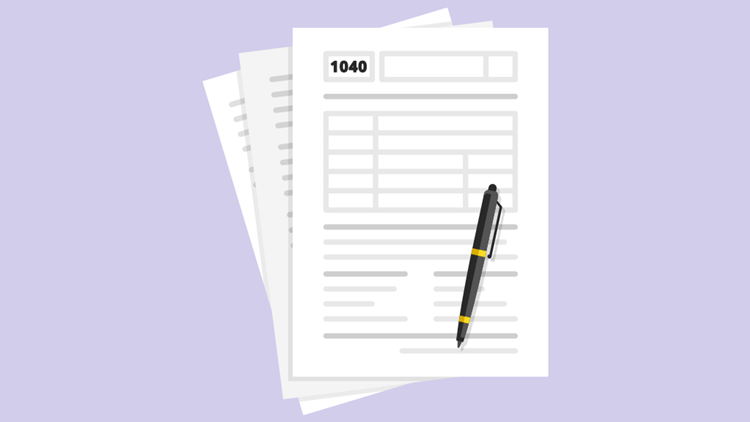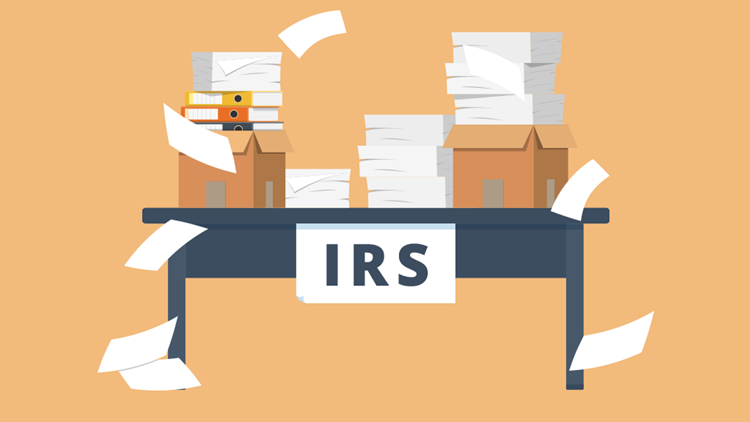
by | Jan 21, 2022 | Tax Tips and News
Millions of Americans are preparing to get their income tax returns in order for the 2021 tax year. While many are mostly concerned about getting their returns in on time, they should also be thinking about filing a correct return.
Most often, it’s the simple tax return errors that trip up taxpayers and delay refund checks. A lot of these errors are easy to prevent.
One great way to avoid errors is to use a reputable tax preparer, which can include certified public accountants, enrolled agents, or other tax pros.
To help simplify the tax-time filing experience, here’s a quick list of some tax-return errors from the IRS:
- Filing too early. While taxpayers should not file late, they also should not file prematurely. People who don’t wait to file before they receive all the proper tax reporting documents risk making a mistake that may lead to a processing delay.
- Missing or inaccurate Social Security numbers (SSN). Each SSN on a tax return should appear exactly as printed on the Social Security card.
- Misspelled names. Likewise, a name listed on a tax return should match the name on that person’s Social Security card.
- Entering information inaccurately. Wages, dividends, bank interest, and other income received and that was reported on an information return should be entered carefully. This includes any information needed to calculated credits and deductions. Using tax software should help prevent math errors, but individuals should always review their tax return for accuracy.
- Incorrect filing status. Some taxpayers choose the wrong filing status. The Interactive Tax Assistant on IRS.gov can help taxpayers choose the correct status especially if more than one filing status applies. Tax software also helps prevent mistakes with filing status.
- Math mistakes. Math errors are some of the most common mistakes. They range from simple addition and subtraction to more complex calculations. Taxpayers should always double check their math. Better yet, tax prep software does it automatically.
- Figuring credits or deductions. Taxpayers can make mistakes figuring things like their Earned Income Tax Credit, Child and Dependent Care Credit, Child Tax Credit, and Recovery Rebate Credit. The Interactive Tax Assistant can help determine if a taxpayer is eligible for tax credits or deductions. Tax software will calculate these credits and deductions and include any required forms and schedules. Taxpayers should Double check where items appear on the final return before clicking the submit button.
- Incorrect bank account numbers. Taxpayers who are due a refund should choose direct deposit. This is the fastest way for a taxpayer to get their money. However, taxpayers need to make sure they use the correct routing and account numbers on their tax return.
- Unsigned forms. An unsigned tax return isn’t valid. In most cases, both spouses must sign a joint return. Exceptions may apply for members of the armed forces or other taxpayers who have a valid power of attorney. Taxpayers can avoid this error by filing their return electronically and digitally signing it before sending it to the IRS.
To keep the wheels of processing rolling smoothly, the IRS urges taxpayers to file electronically and use direct deposit for any refund. Following our plan for avoiding return filing mistakes can help ensure there aren’t any other delays to worry about.
Source: COVID Tax Tip 2022-11
– Story provided by TaxingSubjects.com

by | Jan 20, 2022 | Tax Tips and News
The Internal Revenue Service wants employers to know the clock is ticking, and to get their Forms W-2 and other wage statements to the government very soon. The deadline is January 31.
As of 2015, employers are required by law to get their Forms W-2, Wage and Tax Statements, and Form W-3, Transmittal of Wage and Tax Statements, transmitted to the Social Security Administration by the end of January. Filing these documents ahead of the deadline helps employers avoid penalties while also helping the IRS to prevent fraud.
The employers’ deadline coincides with their deadline to get Forms W-2 into the hands of their workers by January 31, along with any Forms 1099-MISC, Miscellaneous Information, and Forms 1099-NEC, Non-Employee Compensation.
Various other due dates related to these two forms—as well as the dates forms are due at the IRS—are available in the Form 1099 instructions on the IRS website.
Keeping the lid on fraud
When employers file their W-2s and W-3s ahead of the deadline, it gives the IRS more time to detect fraud by verifying the reported income on tax returns. Early filing employers win in two ways: They avoid penalties while helping the fight against fraud.
E-filing is the preferred method of transmitting the needed forms, according to the IRS and the SSA, offering a quick, accurate and convenient method to file. More information about the W-2 filing process can be found on the SSA’s Employer W-2 Filing Instructions & Information website at SSA.gov/employer.
File timely, but file correctly
While keeping the January 31 deadline in mind, employers should also, however, understand the need to file an accurate wage statement.
The Employer Identification Number (EIN) on wage and tax statements, such as forms W-2 and W-3 for example, and on their payroll tax returns have to match the EIN assigned by the IRS to their business.
Employers should not use their Social Security number or Individual Taxpayer Identification Number (ITIN) on any form that asks for an EIN.
Sometimes, such a mismatch seems warranted. When that’s the case – let’s say an employer used an EIN on payroll tax returns different from the EIN used on their W-3 due to a change in ownership – they need to check out General Instructions for Forms W-2 and W-3. On that page, see Box H – “Other EIN used this year.”
When employers use inconsistent EINs – or use another employer’s EIN – on these filings, the result could be penalties and delays in processing the filing employer’s returns.
The IRS says the name and EIN on all statements and forms that are filed have to be consistent and match the EIN assigned to the business exactly. This applies even if an employer uses a third party payer or a different entity within their business to file the forms.
Publication 15, Employer’s Tax Guide, has more information on such third-party situations.
Extensions are available
Form 8809, Application for Extension of Time to File Information Returns, can be used by employers to request a 30-day extension to file their Forms W-2. Form 8809 has to be filed by the original January 31 deadline.
But there’s a catch.
An extension does give the employer more time to get the filing to the IRS. It does not, however, give more time to get wage statements to their employees. The employees still must receive their wage statements by January 31.
For more information on extensions, see Extension of time to furnish Forms W-2 to employees.
Need even more information? The instructions for Forms W-2 & W-3 and the Information Return Penalties page on the IRS website have it.
Source: IR-2022-15
– Story provided by TaxingSubjects.com

by | Jan 19, 2022 | Tax Tips and News
With tax time’s arrival, those Americans who don’t normally have to file an income tax return usually think their circumstances mean they have no benefit to filing a return.
This year, however, could be very different. Credits can make it happen.
The individual’s first priority should be finding out whether they have to file. The Internal Revenue Service’s Interactive Tax Assistant can help them answer that question.
Most times, the need to file is based on income, filing status and age. Other rules could come into play if the would-be filer is self-employed or can be claimed as a dependent of another taxpayer.
Basic questions may point the way
In determining whether to file, taxpayers need to answer some simple questions:
- Did the taxpayer’s employer withhold federal income tax from their pay?
- Did the taxpayer make estimated tax payments during the tax year?
- Did they overpay last year on their taxes and have it applied to their 2021 tax?
If the taxpayer can answer yes to any of these three questions, they could be due a refund. However, they will have to file an income tax return to receive it.
Reasons why some non-filers should file
While some individuals may think their income isn’t enough to warrant filing an income tax return, that income may be enough to qualify for some tax credits. These credits are refundable, meaning a qualified taxpayer can receive the credit even if their tax bill is zero.
Earned Income Tax Credit (EITC): For the 2021 tax year, a working taxpayer needed annual income of just $57,414 or less to qualify for the EITC. By filing this year, taxpayers can qualify for the credit which is worth from $1,502 to $6,728, depending on how many children they have, and the couple’s filing status.
People can use their income from either 2019 or from 2021 to calculate their credit – whichever year gives them the larger credit can be used. The EITC Assistant on IRS.gov can give taxpayers a look at their eligibility.
An important note for taxpayers claiming the Earned Income Tax Credit: the law specifies that income tax refunds with amounts for the EITC cannot go out before mid-February.
Child Tax Credit (CTC): Along with its other requirements, the CTC requires qualified taxpayers to have at least one child under the age of 18. For those taxpayers who have other kinds of dependents, there’s a different credit available.
These credits are available to taxpayers who have:
- Dependent children who are age 18 or older at the end of 2020
- Parents or other qualifying individuals they support
Taxpayers can get help in determining if they qualify for these credits by visiting the Child-Related Tax Benefits webpage on IRS.gov.
Education Credits: A pair of higher education credits can help ease the bite of going to college, sending a child to college, or even being retrained for a job. The American opportunity tax credit targets the costs of getting a four-year undergraduate degree, while the lifetime learning credit provides post-graduates and other long-term part-time students with their own credit.
The student can be the taxpayer, their spouse, or their dependent. The qualified student must have been enrolled at least half-time for one academic period. Being refundable, these credits allow taxpayers to qualify even if they don’t owe any taxes.
Use Form 8863, Education Credits, to claim the credits.
Recovery Rebate Credit: If someone missed out on one of the first two Economic Impact Payments (EIPs) or didn’t qualify for the third one, they might be able to claim the recovery rebate credit.
An individual’s 2021 tax year information is used to determine their eligibility. If they qualify, they have to file a 2021 tax return to get the credit – even if they don’t normally file.
The credit reduces any tax due for 2021 or will be included in a tax refund.
Source: COVID Tax Tip 2022-08
– Story provided by TaxingSubjects.com

by | Jan 13, 2022 | Tax Tips and News
The Internal Revenue Service says it has updated the online frequently asked questions (FAQs) for the 2021 Child Tax Credit and the Advance Child Tax Credit.
The objective, the agency says, is to help qualified taxpayers to claim the credit properly on their 2021 income tax return.
The refurbished FAQs include streamlined questions to help individual taxpayers and tax professionals alike navigate to the answers they need most.
A total of 14 topics have gotten the update treatment, including:
The updated FAQs are likely to see a lot of action.
Taxpayers who received advance payments of the Child Tax Credit will have to compare the total of the payments they got during 2021 against the total amount of the Child Tax Credit they can claim on their return.
If the advance payments were less than the amount they qualify for, they can get the remainder as a refund. However, if the advance payments were more than the amount the filer qualifies for, then taxpayer will have to repay some—or all—of the excess.
To help them calculate just how much they got in advance payments, taxpayers are getting Letter 6419 from the IRS. The letter totals the amount of Child Tax Credit payments the taxpayer received during the course of 2021.
Filers receiving these letters are urged to retain them with their other income tax documents.
The IRS reminds taxpayers and tax pros alike that FAQs should not be relied upon for tax policy guidance in more formal arenas such as US Tax Court. Rather, the FAQs are used by the agency to get new and updated information to taxpayers as quickly as possible.
More information about such reliance is available on the IRS website.
Source: IR-2022-10
– Story provided by TaxingSubjects.com

by | Jan 12, 2022 | Tax Tips and News
“The most challenging year taxpayers and tax professionals have ever experienced.”
With that short sentence, National Taxpayer Advocate Erin Collins sums up her assessment of the calendar year 2021 and its effect on the Internal Revenue Service.
The assessment comes in the Taxpayers Advocate’s Annual Report to Congress, which details the struggles of last year – and a warning for this year’s tax season.
It was a tough job from the start
Collins says the IRS started 2021 behind the eight-ball, stuck between a lack of personnel due to the pandemic and new legislation meant to help counter the financial challenges brought on by the virus that relied on the IRS for implementation.
Collins’ report says the IRS performed well under these rough circumstances, issuing 478 million stimulus payments (also termed Economic Impact Payments or EIPs) totaling over $800 billion as they processed and sent out Advance Child Tax Credit (ACTC) payments to more than 36 million families that totaled over $90 billion.
The report says the IRS suffered the loss of 17% of its workforce in 2021, while its work load increased by nearly 20%.
Collins’ report says the message from the data is clear: 2021 had “no shortage of taxpayer problems.”
The IRS is still processing backlogs
“While my report focuses primarily on the problems of 2021, I am deeply concerned about the upcoming filing season,” Collins noted in the report. “Paper is the IRS’s Kryptonite, and the agency is still buried in it.”
As recently as December, the IRS still had backlogs of some 6 million unprocessed original individual Form 1040 returns, over 2 million unprocessed amended individual returns, and more than 2 million unprocessed Forms 941 and 941-X employer’s quarterly tax returns.
Add to all that another estimated 5 million pieces of taxpayer correspondence, some of which dates back to April and shows many taxpayers still waiting for refunds – nine months later.
Typically, e-filed returns are processed much quicker than paper ones, but the report found that millions of e-filed returns were suspended during processing because discrepancies were found between the amount claimed on the returns and amounts on IRS records.
Most of these revolved around the Recovery Rebate Credit (RRC) claims by taxpayers who didn’t get some or all of the economic impact payments the previous year. These returns had to be manually reviewed. As a result, more than 11 million math error notices were issued to taxpayers for such RRC discrepancies.
Delays in processing mean late refunds
When 2021’s tax deadline of May 17 dawned, the IRS still held more than 35 million tax returns so they could be reviewed by IRS staffers. About half were unprocessed paper returns; the other half were e-filed returns that were suspended during processing. Both instances created large delays for taxpayer refunds.
“Refund delays have a disproportionate impact on low-income taxpayers,” the report says. “Earned Income Tax Credit (EITC) benefits are worth up to $6,660, Child Tax Credit benefits [were] worth up to $2,000 per qualifying child under tax year 2020 rules, and RRCs are potentially worth several thousand dollars for families who did not receive some or all of their EIPs. Millions of taxpayers rely on the benefits from these programs to pay their basic living expenses, and when refunds are substantially delayed, the financial impact can range from mild inconvenience to severe financial hardship.”
Collins worries that the number of returns that are suspended or require manual processing could be high in 2022 as well. Recent legislation that authorized two advance credits could mean even more discrepancies between what is claimed on returns and what shows in the IRS records.
Increasing that risk, Congress also authorized a third round of economic impact payments that can be claimed as a credit by taxpayers who didn’t get the EIPs. Monthly payments of the Advance Child Tax Credit were also added to the mix in 2021.
All these payments have to be reconciled when the recipients file their 2021 returns this tax season. Despite IRS efforts to head off problems, the risk of discrepancies – and math error notices generated by them – remains high.
Customer Service Shortfalls Top the List
While a number of problems were noted by the report to Congress, Collins found some had widespread effects on IRS operations:
- The “Where’s My Refund?” tool wasn’t always the place for an answer. The online tool doesn’t give information on unprocessed returns and also won’t explain any status delays, reasons for delays or what actions taxpayers should take. For a lot of taxpayers, “Where’s My Refund?” just didn’t have a clue.
- Telephone service was the worst it’s ever been. The new credits like the Advance Child Tax Credit pushed call volumes to nearly triple from the year before; telephone support got a record 282 million telephone calls. Not that they were all answered. Customer service representatives only were able to actually answer about 11 percent of those. “Among the lucky one in nine callers who was able to reach a CSR, the IRS reported that hold times averaged 23 minutes,” the report says. “Practitioners and taxpayers have reported that hold times were often much longer, and frustration and dissatisfaction was high throughout the year with the low level of phone service.”
- It took months for the IRS to process taxpayer responses to its notices, delaying refunds. Tens of millions of taxpayers received one or more notices from the IRS during 2021. In many cases, a response was required by the receiving taxpayer and if the IRS automatic system didn’t process a response, the refund claimed on the return wasn’t released. Worse yet, the automated processes could actually take action against the taxpayer. The report found that while the IRS received over 6 million responses to notices from taxpayers, the agency took an average of nearly 200 days to process each of them.
The National Taxpayer Advocate also has some recommendations for Congress. On their tax to-do list:
- Provide the IRS with sufficient funding to improve taxpayer service and modernize its information technology systems.
- When the IRS postpones its tax-filing deadline, extend the period for receiving refunds.
- Authorize the IRS to establish minimum standards for paid tax return preparers.
- Expand the jurisdiction of the U.S. Tax Court to hear refund cases.
- Restructure the Earned Income Tax Credit (EITC); make it simpler for taxpayers and reduce the number of improper payments.
- Protect taxpayer rights by strengthening the Low Income Taxpayer Clinic (LITC) program.
For more information and the complete National Taxpayer Advocate report, visit 2021 National Taxpayer Advocate Annual Report to Congress.
Source: IR-2022-11
– Story provided by TaxingSubjects.com






